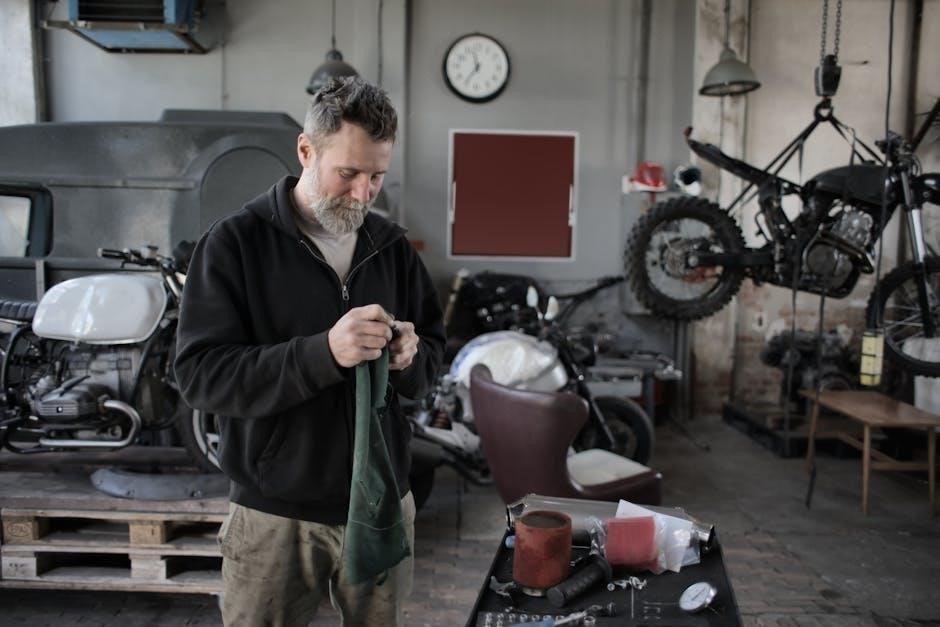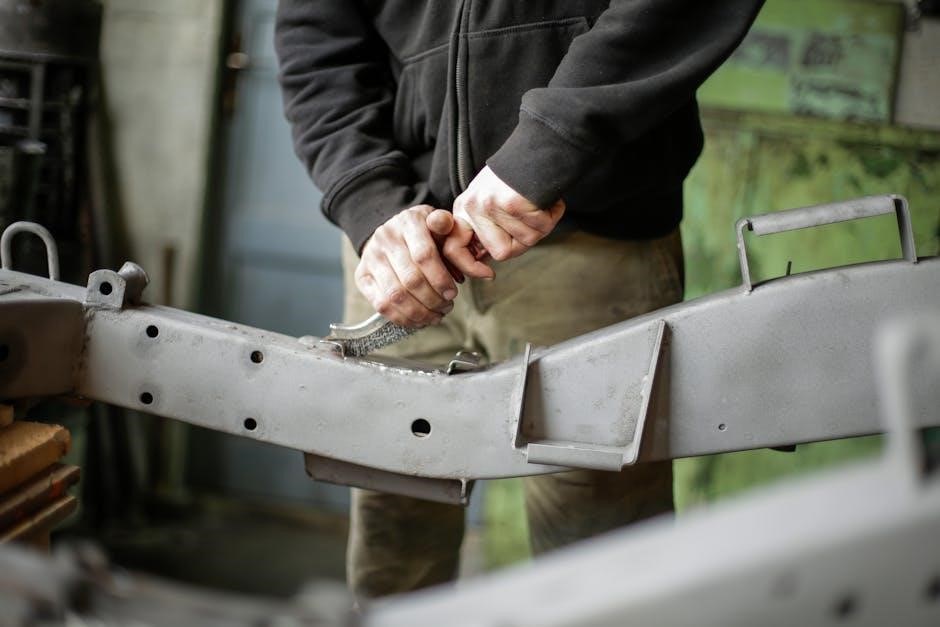
This manual provides essential guidelines for maintaining your Club Car, ensuring optimal performance and longevity with proper tire pressure, brakes, steering, and battery care regularly.
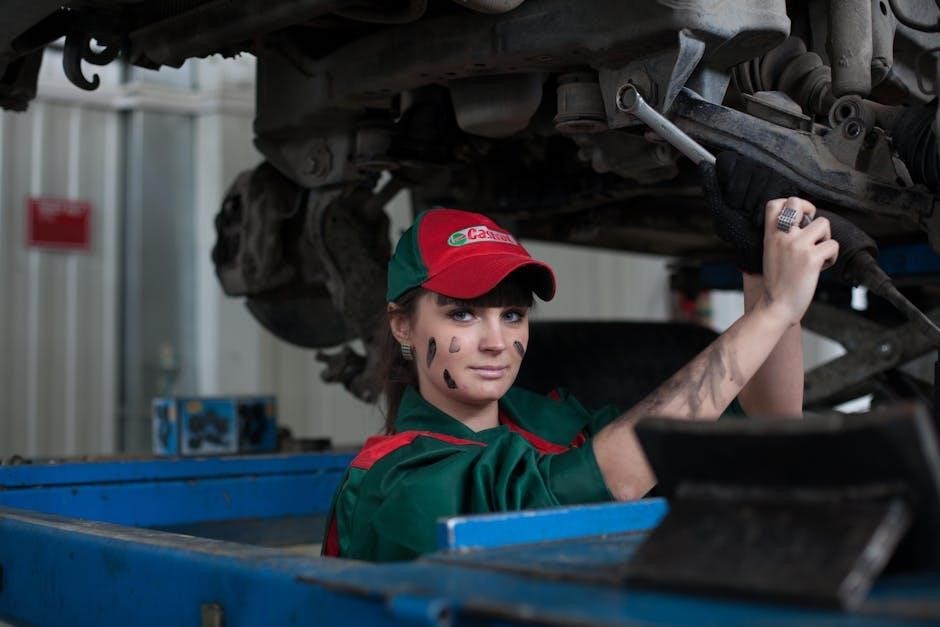
Regular maintenance is essential to ensure your Club Car operates efficiently and safely. This manual serves as a comprehensive guide, helping owners and technicians perform routine checks and repairs. Proper upkeep extends the lifespan of your vehicle, prevents costly damages, and ensures optimal performance; Key areas include tire pressure checks, brake inspections, battery maintenance, and steering system evaluations. By following these guidelines, you can customize a maintenance schedule tailored to your usage. Consistent care not only enhances reliability but also improves safety on the road or course. Whether for personal use or commercial purposes, understanding and implementing these practices will keep your Club Car in top condition. Start with the basics and gradually incorporate advanced techniques for a well-maintained vehicle.
- Regular inspections prevent unexpected breakdowns.
- Customize a maintenance schedule based on usage.
- Proper care enhances safety and performance.
Essential Tools and Equipment for Club Car Service
Proper tools and equipment are vital for effective Club Car maintenance. Start with basic tools like a multimeter, torque wrench, and socket set. A hydraulic jack and jack stands are necessary for lifting the vehicle safely. Ensure you have a tire pressure gauge, grease gun, and oil drain pan for routine tasks. Specialized tools, such as a battery tester and steering alignment kit, may be required for specific repairs. Always refer to your Club Car service manual for model-specific tool recommendations. Keeping a well-organized toolbox and maintaining your tools will streamline the maintenance process. Additionally, stock essential consumables like hydraulic fluid, grease, and brake pads. Having the right equipment on hand ensures you can address issues promptly and efficiently.
- Multimeter for electrical diagnostics.
- Torque wrench for precise bolt tightening.
- Hydraulic jack and stands for safe lifting.
- Grease gun for lubricating moving parts.

General Maintenance Checklist
Regular inspections ensure your Club Car runs smoothly. Check tire pressure, brakes, battery charging, and fluid levels. Lubricate moving parts and inspect belts for wear. Schedule routine servicing.
- Inspect tire pressure and adjust as needed.
- Test brakes for proper function and alignment.
- Monitor battery water levels and charge status.
Tire Pressure and Wheel Inspection
Proper tire pressure and wheel inspection are crucial for your Club Car’s performance and safety. Start by checking the tire pressure using a reliable gauge, ensuring it matches the manufacturer’s recommendations. Underinflated tires can lead to reduced traction, uneven wear, and increased risk of damage. Inspect the wheels for any signs of damage, such as cracks, dents, or rust, which can compromise the vehicle’s stability. Additionally, check the tread depth to ensure adequate grip on various surfaces. If you notice any uneven wear patterns, it may indicate alignment issues that need addressing. Clean the wheels regularly to remove debris and corrosion, which can affect their longevity. Always refer to your Club Car’s manual for specific tire pressure guidelines and maintenance schedules. Regular inspections will help prevent unexpected issues and ensure smooth operation. Properly maintained tires and wheels contribute to better fuel efficiency and handling. Keep your Club Car running safely and efficiently with consistent tire and wheel care.
Brake System Inspection and Adjustment
Regular inspection and adjustment of your Club Car’s brake system are essential for safety and reliability. Start by checking the brake pads for wear, ensuring they are not excessively worn or damaged. Inspect the brake cables for any signs of fraying, rust, or damage, as these can affect braking performance. Test the brake fluid level, ensuring it meets the manufacturer’s recommended level, and look for any signs of leaks in the brake lines or master cylinder. Adjust the brakes according to the manual’s instructions to maintain proper alignment and responsiveness. If you notice any spongy brake pedals or unusual noises, address these issues promptly. Properly functioning brakes are critical for safe operation, so schedule regular inspections and adjustments to prevent potential hazards. Always refer to your Club Car’s service manual for specific guidance on brake maintenance and repair procedures. Regular attention ensures reliable stopping power and extends the lifespan of your brake components.
Steering and Suspension Check
Regular inspection of your Club Car’s steering and suspension system ensures smooth handling and stability. Begin by examining the steering wheel and column for any play or looseness. Check the tie rods, steering links, and ball joints for wear or damage. Inspect the suspension components, including shock absorbers and springs, for rust, leaks, or excessive wear. Ensure all bolts and nuts are tightened to the manufacturer’s specifications. Look for uneven tire wear, which can indicate misalignment. Test the vehicle on a flat surface to verify proper weight distribution and suspension response. Address any issues promptly to maintain control and prevent further damage. Regular maintenance of the steering and suspension system is crucial for safe operation and optimal performance. Always refer to your Club Car’s service manual for detailed inspection and adjustment procedures to keep your vehicle running smoothly and reliably.
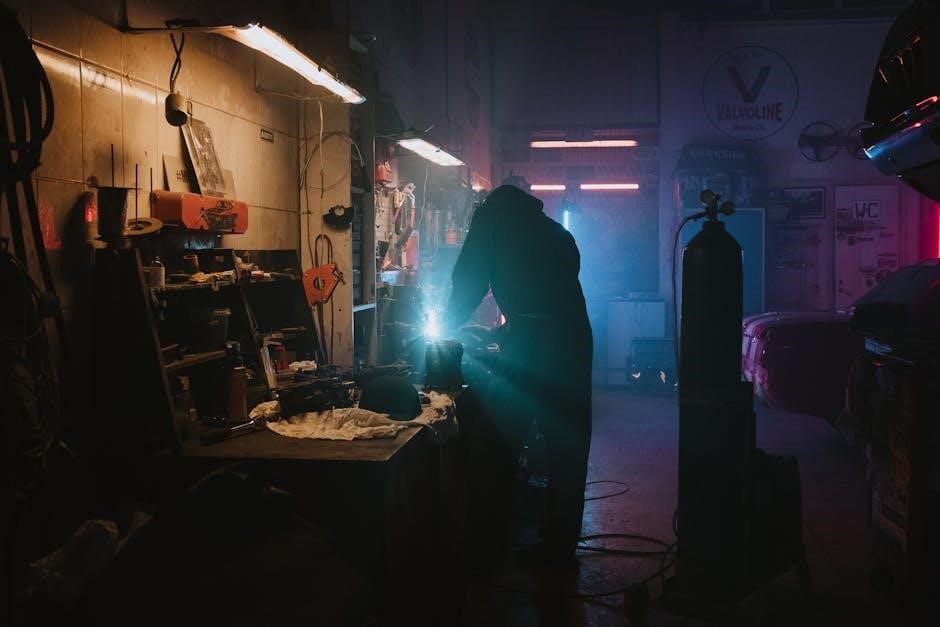
Battery Maintenance and Charging
Proper battery maintenance is essential for the reliable operation of your Club Car. Start by inspecting the battery terminals and cables for corrosion or damage. Clean them with a wire brush and baking soda solution if necessary. Check the water levels in each cell (for flooded batteries) and refill with distilled water as needed. Avoid overcharging, as it can reduce battery life. Use a high-quality charger designed for your battery type, and ensure it is set to the correct voltage and amperage. Store the battery in a cool, dry place during extended periods of inactivity. Regularly test the battery’s state of charge using a hydrometer or multimeter. Replace worn-out or damaged batteries promptly to prevent power issues. Always follow safety precautions, such as wearing gloves and working in a well-ventilated area, when handling batteries. Proper care extends the lifespan and ensures consistent performance for your Club Car.
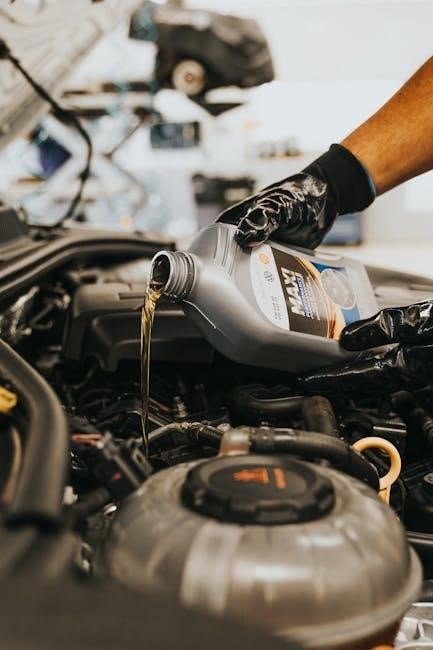
Service and Repair Procedures
Regular oil changes, engine inspections, and electrical system checks ensure your Club Car runs smoothly. Address issues promptly to prevent major repairs and maintain optimal performance always.
Oil and Filter Change
Regular oil and filter changes are crucial for maintaining your Club Car’s engine health. Start by gathering the necessary tools: a socket wrench, drain pan, new oil filter, and enough motor oil to refill the engine; Warm up the engine by driving the cart for a few minutes to ensure the oil flows freely. Locate the oil drain plug underneath the cart, position the drain pan, and remove the plug to let the old oil flow out. Once drained, replace the oil filter with a new one, tightening it securely with a torque wrench. Refill the engine with the recommended type and amount of oil, as specified in your Club Car manual. Dispose of the used oil and filter responsibly. Check for any leaks and test the cart to ensure everything runs smoothly. Regular oil changes help prevent engine wear and extend the lifespan of your vehicle.
Engine and Cooling System Service

Regular engine and cooling system maintenance ensures your Club Car runs efficiently and avoids overheating. Start by checking the coolant level and mixture, ensuring it meets the manufacturer’s recommendations. Inspect the hoses and radiator for leaks, damage, or blockages, and clean or replace them as needed. Flush and refill the coolant system periodically to prevent corrosion and maintain proper heat transfer. Check the engine oil level and condition, and perform an oil change if necessary. Inspect the air filter and replace it if dirty or clogged to ensure proper airflow. Additionally, examine the spark plugs for wear and replace them if fouled or worn out. Bleed the cooling system to remove air pockets, following the manual’s guidelines. Monitor the temperature gauge during operation and address any unusual readings promptly. Regular engine and cooling system service prevents overheating, enhances performance, and extends the lifespan of your Club Car.

Electrical System Troubleshooting
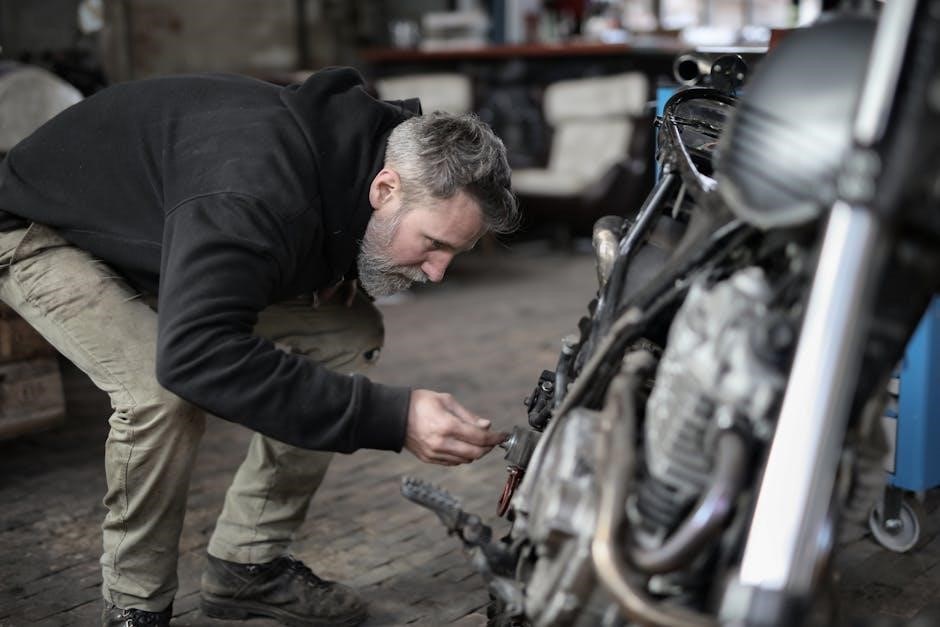
Troubleshooting the electrical system of your Club Car is crucial for identifying and resolving issues promptly. Start by checking the battery voltage using a multimeter to ensure it meets the recommended specifications. Inspect all connections, including the terminals and cables, for tightness and corrosion. If the cart won’t start, test the fuses and circuit breakers to ensure they are functioning properly. Use a multimeter to verify continuity in switches, solenoids, and other electrical components. Check for loose or corroded connections at the motor, controller, and battery. If lights or accessories malfunction, inspect the wiring harness for damage or wear. Consult the service manual for specific troubleshooting procedures, as different models may have unique electrical configurations. Regularly testing and maintaining the electrical system ensures reliable performance and prevents unexpected breakdowns. Always refer to the manual for guidance on complex repairs or replacements.

Advanced Tips and Best Practices
Customize your Club Car with performance-enhancing upgrades and track maintenance history for longevity. Always follow safety guidelines during servicing to ensure optimal functionality and reliability over time.
Custom Upgrades and Accessories
Customizing your Club Car can enhance both its functionality and aesthetic appeal. Popular upgrades include lift kits for increased ground clearance, premium seats for comfort, and stylish wheels and tires for improved performance. Accessories like storage solutions, light kits, and cargo beds can also be added to suit your specific needs. When selecting upgrades, ensure compatibility with your Club Car model and consult the manufacturer’s guidelines to avoid voiding warranties. Performance-enhancing parts, such as high-speed motors or upgraded exhaust systems, can boost power and efficiency. Additionally, consider adding utility-focused accessories like roof kits or windshields for protection during inclement weather. Tracking maintenance history after upgrades is crucial to ensure longevity and reliability. Always follow safety precautions when installing modifications to maintain your Club Car’s optimal condition.
Tracking Maintenance History
Maintaining a detailed record of your Club Car’s maintenance is crucial for ensuring reliability and longevity. Use the vehicle’s serial number to track service history, allowing dealerships or service centers to monitor completed work. Digital tools and apps can help log maintenance tasks, while traditional methods like a dedicated logbook remain effective. Record dates, mileage, and specifics of each service, such as oil changes or tire rotations. This documentation is invaluable for diagnosing issues and planning future maintenance. Regular updates ensure consistency and provide a clear overview of your Club Car’s condition. Over time, this history can also enhance resale value by demonstrating proper care. Always store records securely, whether digitally or physically, and review them periodically to stay informed about your vehicle’s needs.
Safety Precautions During Service
Ensuring safety during Club Car maintenance is paramount to prevent accidents and injuries. Always wear protective gear, such as gloves and safety glasses, when working with tools or electrical systems. Disconnect the battery before performing any major repairs to avoid accidental start-ups or electrical shocks. Use jack stands to securely support the vehicle when lifting, and ensure the area is clear of flammable materials. Be cautious when handling sharp objects or hot components, and avoid overreaching or standing in unsafe positions. Keep loose clothing and long hair tied back to prevent entanglement with moving parts. Familiarize yourself with the vehicle’s systems before starting work, and consult the manual if unsure. Never smoke or use open flames near fuel or battery systems. Regularly inspect tools for damage and maintain a clean, well-lit workspace to minimize hazards. Following these precautions ensures a safe and efficient service experience.
